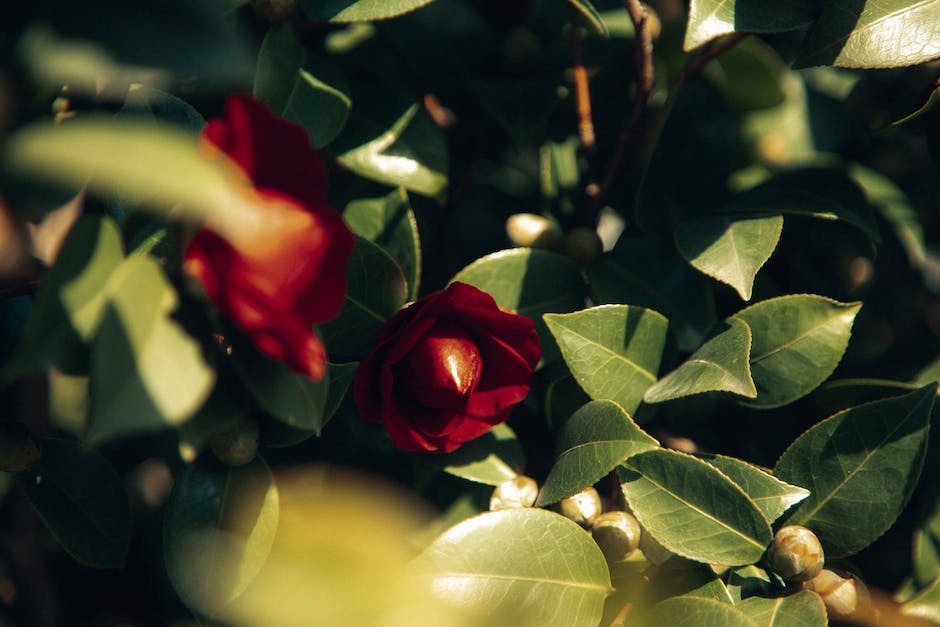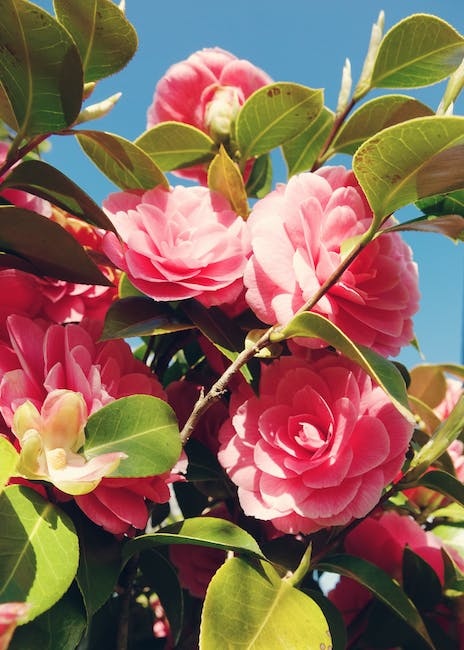The Science of Germination: How Camellia Sinensis Seeds Turn Into Tea Plants
Have you ever wondered how a tiny seed can grow into a beautiful and complex plant? This process is called germination, and it is the foundation of all plant life. In this article, we will explore the science behind germination and how it applies to one of our favorite plants, Camellia sinensis the tea plant.
What is Germination?
Germination is the process by which a seed turns into a plant. It begins when the seed absorbs water and ends with the emergence of the first leaves and roots. For Camellia sinensis seeds, this process requires specific environmental conditions.
Stratification
Camellia sinensis seeds need to be stratified for several months before they can germinate. Stratification is the process of storing seeds in a cold, damp environment to mimic winter conditions. This signals to the seed that it is time to prepare for spring and begin germination.
Activation
Once stratification is complete, the seeds need warmth and moisture to start sprouting. The first step in germination is the absorption of water by the seed. This triggers a series of biochemical reactions that activate the embryo inside. The embryo then starts growing and forming the first roots and leaves of the plant, using the nutrients stored in the seed.
Enzyme Production
During germination, the seed also produces enzymes that break down starch and other complex molecules into simpler forms that the plant can use for energy. This process is crucial for the plant to establish itself and continue growing.
Factors Affecting Germination
The speed and success of germination depend on various factors, such as temperature, humidity, soil type, and seed quality. Ideal conditions for Camellia sinensis seeds include a temperature range of 65-75F (18-24C), high humidity (around 80%), and well-draining soil.
Conclusion
Germination is a complex and fascinating process that is essential for the growth of all plants, including the Camellia sinensis plant that gives us the tea we love. By understanding the science behind germination, we can appreciate the beauty and complexity of the natural world.
How to Germinate Camellia Sinensis Seeds: A Guide for Tea Lovers
Are you a tea lover looking to grow your own Camellia Sinensis plants and harvest your own leaves for a homemade brew? Germinating Camellia Sinensis seeds can be a bit tricky, but with the right conditions and techniques, you can successfully grow your own tea plants. Here’s a step-by-step guide on how to germinate Camellia Sinensis seeds:
Step 1: Collecting Fresh Seeds
The first step in germinating Camellia Sinensis seeds is to collect fresh seeds from mature tea plants. You can do this by handpicking or by using a harvesting machine. Look for seeds that are plump, firm, and brown in color. Avoid seeds that are shriveled or damaged.
Step 2: Preparing the Germination Medium
Once you have the seeds, you need to prepare a suitable germination medium. The medium should be well-draining, sterile, and slightly acidic (pH 5.5-6.5). You can use a mix of peat moss, perlite, and vermiculite, or a commercial seed-starting mix. Make sure the medium is moist but not waterlogged.
Step 3: Soaking the Seeds
Before sowing the seeds, you should soak them in water for a few hours or overnight. This will soften the seed coat and improve their chances of sprouting.
Step 4: Choosing a Germination Method
Next, you can either sow the seeds directly in the germination medium, or use a pre-germination method such as stratification or scarification. Stratification involves chilling the seeds in the refrigerator for a certain period (usually 4-8 weeks) to mimic the winter conditions they would experience in their natural habitat. Scarification involves nicking or scratching the seed coat to allow water and air to penetrate more easily.

Step 5: Sowing the Seeds
Once you have prepared the seeds and the germination medium, you can sow the seeds at a depth of 1-2 cm, and cover them lightly with the medium. Water the soil gently, using a misting spray or a watering can with a fine rose. Avoid overwatering, as this can lead to fungal growth and rot.
Step 6: Providing the Right Conditions
Finally, place the container in a warm, bright location (ideally around 20-25C or 68-77F) and keep the soil moist but not waterlogged. You should see sprouts emerging within 2-4 weeks, but it may take longer depending on the seed quality and the germination method used.
Step 7: Transplanting the Seedlings
Once the seedlings have emerged, you can transplant them into individual pots or a larger container, using a well-draining potting mix and providing them with adequate light, humidity, and nutrients. It may take several years for the plants to reach maturity and start producing tea leaves, but with proper care and patience, you can enjoy the fruits of your labor.
Conclusion
Growing your own Camellia Sinensis plants and harvesting your own tea leaves can be a rewarding and fulfilling experience. With the right techniques and conditions, you can successfully germinate Camellia Sinensis seeds and grow your own tea plants. Follow these steps, and soon you’ll be sipping on a delicious cup of homemade tea!
Growing Camellia Sinensis: Tips for Germinating Seeds
Camellia sinensis, the plant from which tea is made, is a delicate plant that requires special care during germination. If you’re interested in growing your own tea plants, it’s important to understand how to properly germinate the seeds. In this post, we’ll share some tips for successfully germinating Camellia sinensis seeds.
Planting Camellia Sinensis Seeds
Before you get started, it’s important to gather all of the necessary materials. You’ll need Camellia sinensis seeds, a well-draining soil mix (such as a mixture of peat moss and perlite), and a container for planting.
Here are the steps to follow:
- Fill your container with the soil mix. Make sure the soil is moist but not waterlogged.
- Plant the seeds shallowly, about 1/4 inch deep.
- Cover the seeds with a thin layer of soil.
- Place the container in a warm, humid environment. You can use a plastic dome or a greenhouse to create these conditions.
Growing Camellia Sinensis Seedlings
Once the seeds have been planted, it’s important to keep them in a warm, humid environment until they sprout. This can take anywhere from 2-6 weeks, depending on conditions such as temperature and humidity. Here are some tips for growing Camellia sinensis seedlings:
- Gradually acclimate the seedlings to cooler, drier conditions once they sprout.
- Fertilize the seedlings with a balanced fertilizer (such as a 10-10-10) once they have developed their first true leaves.
- Regularly water and fertilize the seedlings to help them grow into healthy, vigorous plants.
With proper care, your Camellia sinensis seedlings will grow into healthy, robust plants that can be transplanted into larger containers or the ground. Happy growing!
Mastering the Art of Germinating Camellia Sinensis Seeds
Camellia sinensis, also known as the tea plant, is a notoriously difficult plant to grow from seed. With a low success rate and slow growth, even under optimal conditions, many gardeners are hesitant to take on the challenge. However, with some careful planning and attention to detail, anyone can successfully germinate Camellia sinensis seeds and grow their own tea plants.
Common Issues during Germination
Before diving into the specifics of germinating Camellia sinensis seeds, it is important to understand the common issues that may arise during the process. These include:
- Poor seed quality
- Low humidity
- Inadequate soil moisture
- Fungal or bacterial infections
- Pest infestations
Addressing these issues is key to ensuring successful germination and healthy plant growth.
Improving Seed Quality
One of the biggest challenges in germinating Camellia sinensis seeds is poor seed quality. To combat this, it is important to source seeds from reputable suppliers and ensure they are fresh and viable. Soaking the seeds in water overnight before sowing can also help improve germination rates.
Maintaining High Humidity Levels
Camellia sinensis seeds require high humidity levels to sprout. To achieve this, cover the seed tray with plastic wrap or use a humidity dome. This will help maintain the necessary moisture levels for successful germination.
Adequate Soil Moisture
While maintaining high humidity levels is crucial, it is also important to provide adequate soil moisture. However, overwatering can lead to root rot and other issues. It is recommended to use a well-draining soil mix and water the seeds lightly and consistently.
Preventing Fungal or Bacterial Infections
Fungal or bacterial infections can be prevented by using sterilized soil and avoiding overcrowding of seedlings. If an infection does occur, removing affected plants and treating the remaining ones with a fungicide or bactericide may be necessary.
Preventing Pest Infestations
Pest infestations can be prevented by keeping the growing area clean and free of debris. Organic pest control methods such as neem oil or insecticidal soap can also be used if necessary.
In Conclusion
Germinating Camellia sinensis seeds may be a challenge, but with the right techniques and attention to detail, it is possible to successfully grow your own tea plants. By addressing common issues such as poor seed quality, low humidity, inadequate soil moisture, fungal or bacterial infections, and pest infestations, you can ensure healthy plant growth and a bountiful tea harvest.


Leave a Reply